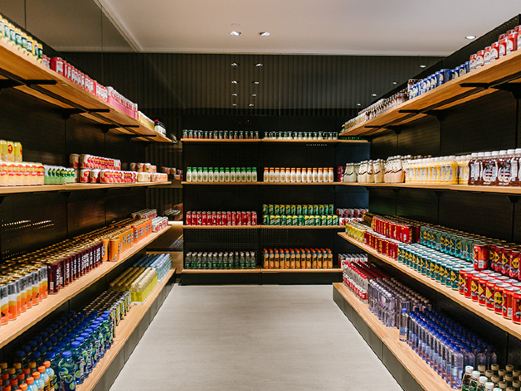The Hemudu Site Museum is located in Hemudu Town. For many, the term ‘Hemudu Culture’ is just a term from history textbooks, but when you visit Yuyao, one of the birthplaces of Hemudu culture, there is no reason not to visit the museum to witness its past and present. If you travel with children, it is an excellent opportunity to gain knowledge. The museum consists of two parts: an exhibition hall and a site display area.
The archway made up of three large stones at the entrance of the museum is its signature, with a picture on the beam from an ivory piece unearthed at the site: two giant birds flapping their wings, protecting the sun’s rise, full of tension. Almost all tourists who come here will take a photo here. The architectural design of the museum is also based on the Hemudu architectural style, with a gabled appearance, and several sets of interlocking components symbolizing the mortise-tenon technology of Hemudu. First, visit the exhibition hall, which has three exhibition rooms. The first exhibition room is a preface hall, displaying an overview of Hemudu culture with text, models, and cultural relics. Particularly, two skull fossils and restored portraits allow visitors to see the appearance of ancestors after 7000 years. The second exhibition room mainly focuses on agriculture and fishing activities, displaying artifacts including stone tools, pottery, bone needles, bone whistles, and other tools with typical Neolithic characteristics, as well as remnants of crops such as rice and sour jujube, allowing you to understand how the ancestors lived and produced at that time. The third exhibition room focuses on life and art, displaying architectural wood components and various textile tools. In addition, there are many decorations made of ivory, bone, jade, and pottery, with craftsmanship and design concepts that are truly astonishing. Visitors can perceive the daily and artistic life of the Hemudu people from this. After leaving the exhibition hall and walking southeast for a short distance, you will arrive at the site display area. The first thing that catches the eye is the restored archaeological site, with a large number of dense wooden architectural components in the ground enclosure, showing the prosperity of the Hemudu tribe. In addition, there is a reconstructed Hemudu house nearby. These ‘dry-column’ buildings not only have a very artistic shape, but the mortise-tenon technology and the design of living above and raising livestock below are epoch-making innovations in Hemudu culture. Here, a group of sculptures creates the atmosphere of life at that time, which is the most interesting and intuitive part of the museum. You can walk on the streets like a resident of the tribe, or enter the house to see women spinning and weaving, and men chopping wood and building houses. Some people are grinding bone tools, some are husking grains, some are making pottery, and some are concentrating on carving, making people feel as if they have returned to ancient times, with a strong sense of time travel. After the visit, you might as well take a walk by the nearby Yaojiang River, where the scenery is quite good.If you are interested in archaeology, about 7 kilometers to the north, the Tianluoshan Site Field Museum, which is also managed by the museum, is also worth a visit. You can see the archaeological site up close. However, due to the lack of reliable public transportation, you may need to find a tricycle or motorcycle taxi to get there.

Opening hours: From May 1st to September 30th, open from Tuesday to Sunday, 08:30 – 17:00; closed all day on Monday throughout the year; from October 1st to April 30th, open from Tuesday to Sunday, 09:00 – 16:30; open from 09:00 – 16:30 on New Year’s Day, Spring Festival, Tomb-Sweeping Day, Labor Day, Dragon Boat Festival, Mid-Autumn Festival, and National Day.

Must-see tips: 1. Chinese language explanations in the exhibition hall cost 50 yuan per session. Foreign language explanations (English, Japanese) cost 80 yuan per session. Each batch is limited to within 30 people. 2. Tripods and flashlights cannot be used for photography in the exhibition hall.










